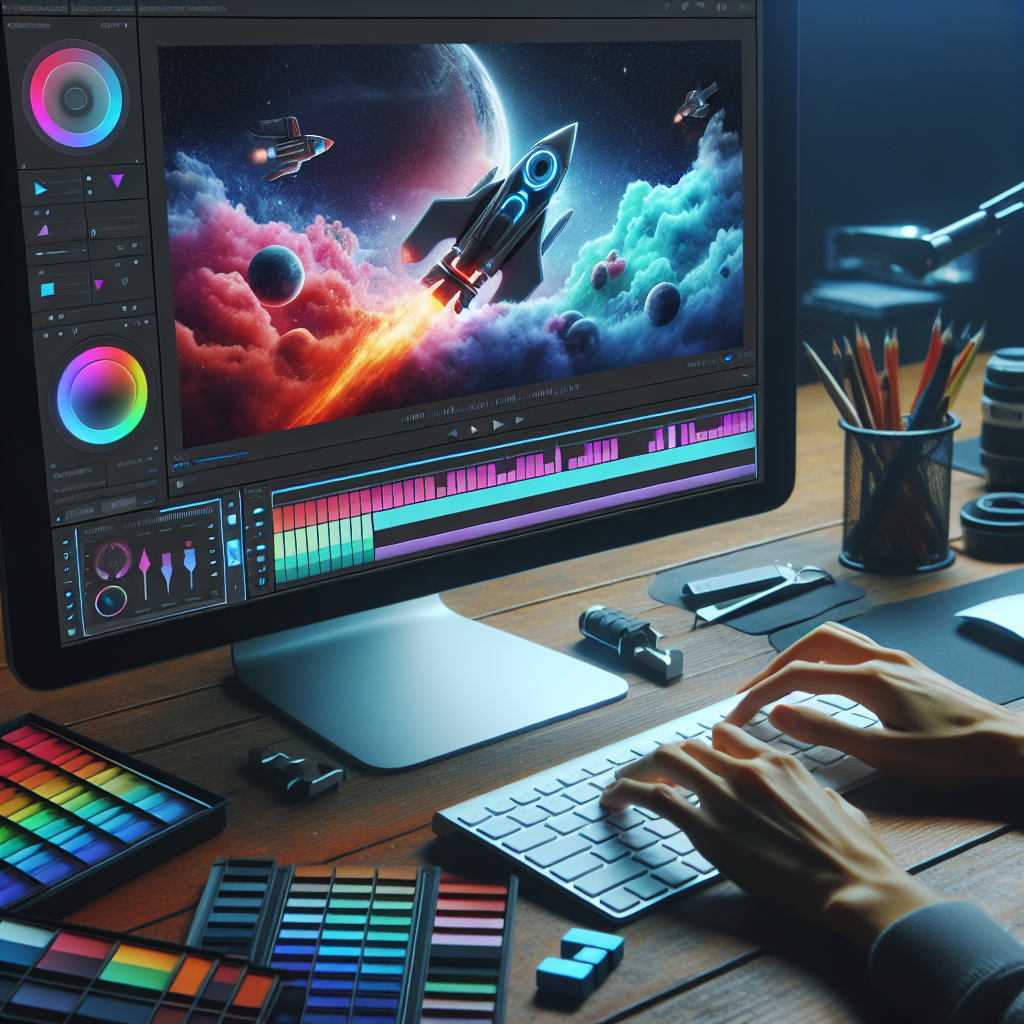In today’s digital world, video content creation is not as daunting as it used to be. The technology has evolved substantially, making it easier to edit and color correct videos with software applications. Color correction is a fundamental part of the post-production process, and its significance cannot be understated. It not only enhances the visual aesthetics of a video but also makes it more appealing to viewers. If you are a content creator, an aspiring filmmaker, or a visual art enthusiast, then unlocking the power of video editing software for color correction could open up a world of untapped creative potential.
Firstly, let’s start with the basics: understanding what color correction is. Simply put, it is a technique applied in post-production to adjust the color tones in your videos, improving their overall look and feel. Whether it’s evening out color across multiple shots, creating a specific mood or style, or simply making your videos look more professional, color correction plays a significant role in the video editing process.
Why is Color Correction Necessary?
Color correction has several benefits. It can make your video look more polished and professional. It also creates visual consistency and continuity by matching the color grade across various shots. Without color correction, your video might have different color tones, which can be visually distracting for your audience. Creating a uniform look throughout your video keeps the viewers’ attention on the content rather than differences in color.
Unlocking the Power of Video Editing Software
Most professional video editing software come equipped with advanced color correction features. Adobe Premiere, DaVinci Resolve, and Final Cut Pro are among the popular choices. All of these provide a suite of tools to control color grading, giving you the freedom to bring out the best in your videos.
Getting started with color correction can be daunting, especially if you’re new to video editing software. However, once you grasp the basics – understanding color balance, learning how to read a vectorscope or a waveform monitor, mastering color grading tools, and editing visuals with an artistic touch – these tasks become second nature.
Color correction allows you to channel your creativity and transform mediocre footage into cinematic brilliance. By leveraging the power of video editing software, you can widen your creative horizon and accurately depict your vision on screen.
The Learning Curve
As with any creative process, there is a learning curve to color correction. It involves both technical expertise and artistic intuition, and learning to balance the two takes time and practice. Fortunately, with the user-friendly interfaces and resources available today, anyone willing to put in the hard work can master color correction.
Conclusion
Color correction is not just about fixing errors; it’s about enhancing the visual story through colors and tones. It’s an invaluable tool for filmmakers, photographers, and digital content creators alike. By unlocking the power of video editing software, you can add depth, mood, and visual consistency to your work, taking it from amateur to professional.
Frequently Asked Questions (FAQs)
- What is the best software for color correction?
There is a wide range of software available, with Adobe Premiere Pro, DaVinci Resolve, and Final Cut Pro being among the most popular. - Is color correction necessary for all videos?
While not mandatory, color correction can dramatically improve the visual aesthetics and professional feel of a video. - How long does it take to master color correction?
The learning curve varies since it’s both an artistic and technical process. However, with consistent practice, one can make significant progress within a few months. - I’m new to video editing. Where should I start with color correction?
Start by understanding color balance, learn to read a vectorscope or waveform monitor, and practice with different color grading tools. - Can color correction fix all visual errors in a video?
Color correction is a powerful tool, but it’s not magical. It can’t fix all visual errors, but it can significantly enhance the overall quality of a video.

